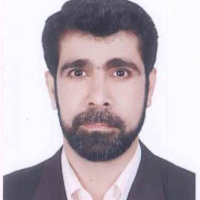The Interrelationship of Religion and Myth in Eliade’s Phenomenology and Jung’s Analytical Psychology
The issue of religion has been very important in humans’ life from the beginning until now in such a way that it has played a special role even in their individual and social life. In this regard, theorists have studied this issue with different approaches and have offered different definitions of religion. One of these theorists is Mircea Eliade, who is a great researcher in the field of religion and myth. He has approached the issue of religion with a phenomenological approach. Emphasizing religious symbolism, he stated that religion refers to the experience of the sacred. In his view, the duty of religion and religious rites is nothing more than an increase in human exposure to the sacred. He considers the sacred to be a common component of all religions. Regarding the sacred manifestations, he believes that the symbols of the sacred can appear in the form of worldly affairs. He opposes the traditionalist approach and believes that the phenomenon of religion should be studied without reducing it to other areas. According to Eliade, myth is based on ontology and speaks only of the facts and things that have been manifested and how the universe was created and evolved. Eliade considers myth as a model for precisely religious practices that must be approached to find the origin of religion. Therefore, it is difficult to present a single and universally accepted definition of myth. However, he considers myth to be a narrative of sacred history and relates it to an event that has occurred in ancient times and is the essence of religion. According to Eliade, the historical method is useful for systematizing religion, and the belief in oneness and harmony with the world is one of the strongest foundations of myth. Using historical documents, he tries to express the manifestations of the sacred and find the existential position and the religious meanings presented in these phenomena. In his view, the sacred should not be sought merely in experiences specific to God. The manifestation of the sacred is abundantly hidden and visible in the symbolism and rituals of almost every culture, especially in the primitive and Asian cultures. Eliade considers the holy and fundamental element between religions to be the same thing. The realm of religion is the distinction between the sacred and the unholy. Carl Gustav Jung was also a great philosopher and psychologist who conducted studies on human nature and, as the founder of analytical psychology, linked archetypes to religion. One of the fundamental concepts in Jung psychology is the collective unconscious discussion. He considers archetypes to be important features of the collective unconscious. Referring to the issues such as myth and symbol, he considers the language of symbols as the language of the subconscious, which manifests itself through myth. In mythology, Jung seeks out signs of man’s inclination to the sacred that can be accurately traced in mythology to an understanding of archetypes. From Jung's point of view, God is also an archetype. He does not try to separate rituals and traditions from religion. According to Jung, myth and religion have traditionally interacted. Religion preserves myth and myth perpetuates religion. Myths, along with rituals, open the door to God, and myth, contrary to the belief that it is only enlightening, is the creator of experience. Jung believes that if religion has a meaning, it must be sought in connection with myths. He considers the language of religion as a symbolic language that must be deciphered in order to discover its truth. In this paper, using a comparative descriptive approach, the relationship between religion and myth is depicted from Jung and Eliade’s point of view. The psychological approach to the myth, the most important example of which presented in Jung's works, had a great influence on Eliade's approach to mythological studies of religion. According to Eliade, many of the terms used in the discussion of theology and mythology are used in the same way by Jung. Although Jung’s view of religion and myth was from the perspective of analytical psychology with an emphasis on the collective unconscious, there are similarities and differences in Eliade's approach to religious mythology, which was largely derived from religious phenomenology and hermeneutics interpretation. Eliade uses exemplary forms to mean the supreme example and the pattern of the prototype, while Jung considers exemplary forms to be the same collective unconscious structures. According to Eliade, myth is a narrative or symbolic manifestation of gods, angels, supernatural beings, and a cosmology in general that a group of people use to interpret its existence. But for Jung, myths are common themes that have always existed and are repeated in the same way throughout the lives of all human beings and form the basic collective unconscious structure. According to Jung, religion arises from the subconscious mind and is expressed in symbolic language. He sees archetypes as a kind of organizer of religion. He sees religion as a channel for satisfying the mythical tendencies in the individual’s psyche, which, by blocking this path, will find dangerous ways to emerge. But Eliade, with a phenomenological approach and an emphasis on religious symbolism and as an interpreter of religious symbols believes that religion refers to the experience of the sacred.
- حق عضویت دریافتی صرف حمایت از نشریات عضو و نگهداری، تکمیل و توسعه مگیران میشود.
- پرداخت حق اشتراک و دانلود مقالات اجازه بازنشر آن در سایر رسانههای چاپی و دیجیتال را به کاربر نمیدهد.


